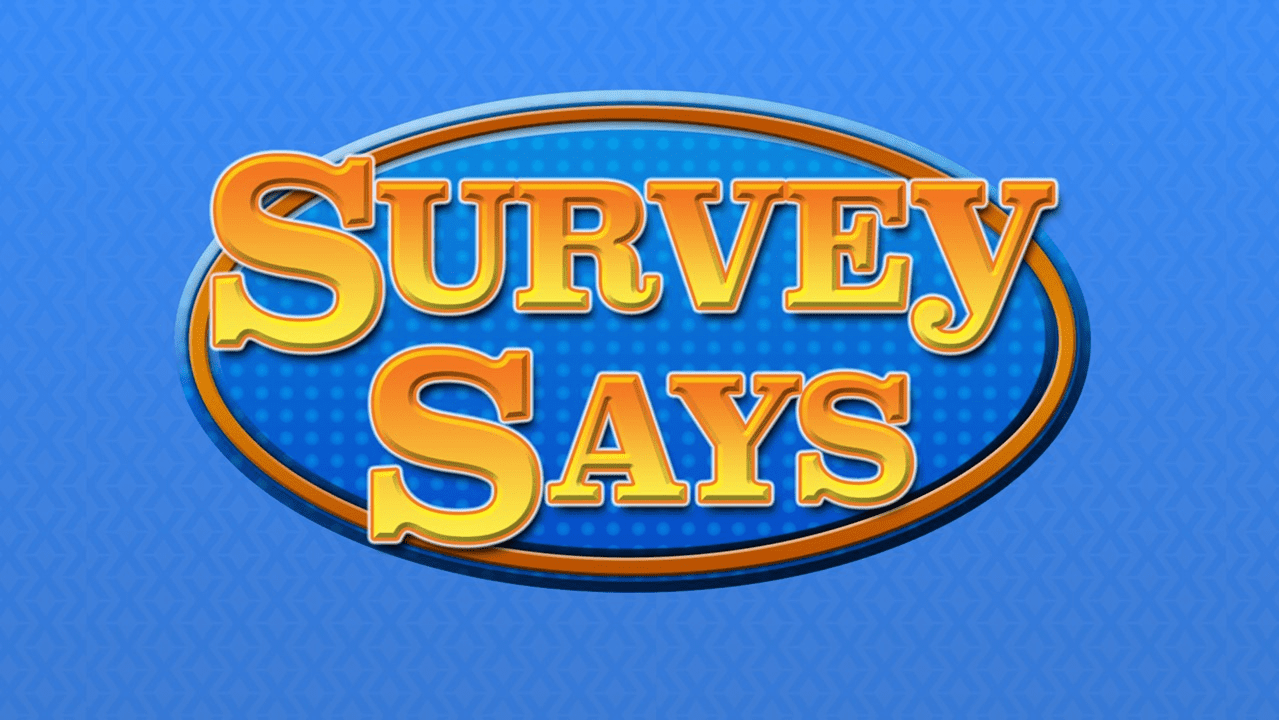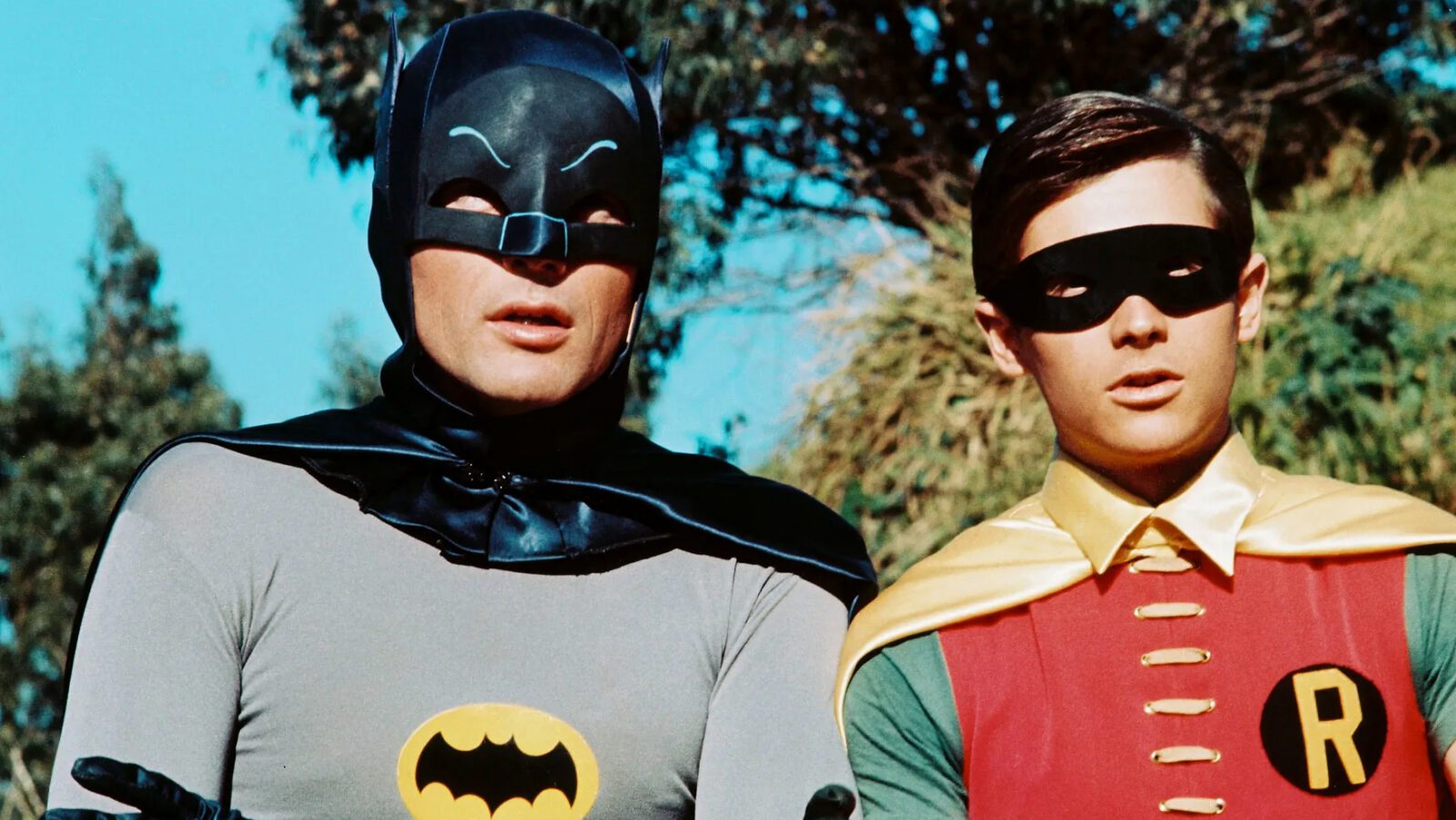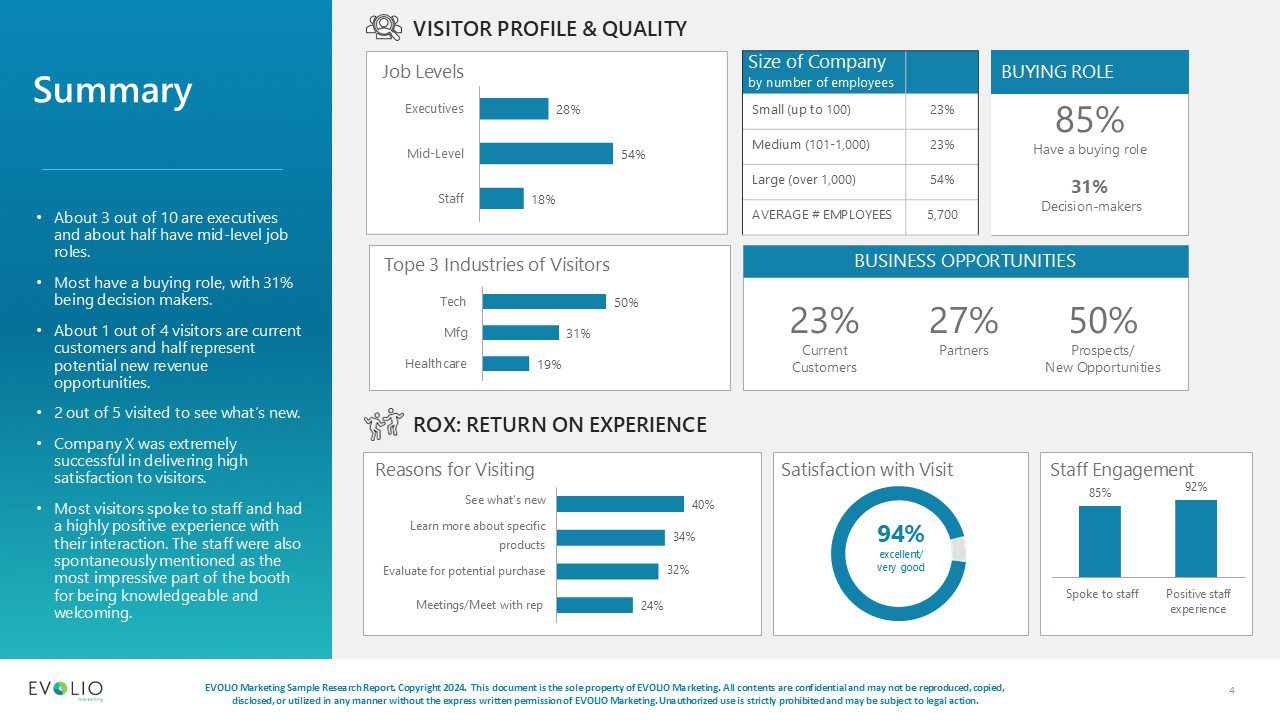
We sat down with Joe Federbush, President and Chief Strategist at Evolio Marketing, who started his career mailing surveys back in high school and hasn’t stopped collecting data since. Joe’s been around the block (and the booth), and he’s here to tell us why exit surveys are the secret sauce for event marketers who want to know what’s really going on in their booths. Spoiler alert: It’s not always what you think.
Exit Surveys: More Than Just “Thanks for Stopping By”

Voice of the Visitor (VoV): Let’s face it — guessing how your booth performed based on your gut is about as reliable as using a Magic 8-Ball to make million-dollar decisions. Exit surveys give you the real-time visitor feedback you need to know what’s working — and what’s falling flat — so you can pivot before it’s too late. It’s like getting the director’s cut before the movie’s even finished.
Instant Team Motivation: Imagine starting each day with a pep talk straight from your visitors’ mouths. Survey results give your booth staff direct feedback, so they know what they’re crushing and where they might need to dial it back. Staffers love it — they get to see how their efforts are impacting the experience, and that morning review of the KPIs and metrics helps them fine-tune their approach each day. It’s like being on a reality TV show, but instead of getting voted off the island, you get tips to improve your booth game.
Response Rates that Make You Say ‘Wow’: On-site exit surveys tend to get a whopping 70% response rate, whereas post-event surveys barely scrape by with less than 5%. Why? Because people are still buzzing from the booth experience when you catch them on-site. Email surveys, on the other hand, are like trying to invite people to a party the day after — it’s too late.
Consider having a professional third-party handle data collection. Sometimes exhibitors’ own staffers are distracted by their primary tasks, but a dedicated survey team motivated by daily quotas, ensures you get reliable real-time data.
Entry + Exit Surveys = A Dynamic Duo

Joe argues that pairing entry and exit surveys is like hitting the jackpot twice at the same slot machine. Entry (unexposed) surveys capture visitors’ initial impressions, while exit (exposed) surveys reveal how much their opinions changed after interacting with your booth. It’s like running an instant replay on your entire event — except you don’t need a referee.
Pairing the two [entry and exits surveys] is the best true research methodology. It allows you to track how brand awareness and perceptions evolve from entry to exit, giving you a clear picture of your booth’s impact.
How to Get People to Actually Take Your Survey (And Not Roll Their Eyes)
Keep It Short: People have the attention span of a TikTok scroll these days. “Five to seven minutes is a sweet spot to aim for, and be upfront about it,” Joe advises. If you tell people it’s a “quick 5-minute survey,” you’re much more likely to get a “Yes” than if you say “It’s just a couple of questions” and trap them in a 20-minute interrogation. Honesty is the best policy here.
Give Them What They Want: Incentives can work wonders. A $10 Amazon or Starbucks gift card is the magic ticket for most, but always check industry rules (turns out, the military and healthcare don’t take kindly to gift cards). Some visitors can be lured in with a raffle, while others love giveaways. At gaming conventions, for instance, cool swag is often more enticing than a generic gift card.
Sell the Why: Be real with people. If the survey is going to help improve their experience, tell them. If attendees think the survey is going to fill their inbox with spam, they’ll run faster than Usain Bolt. But if you’re collecting feedback to make your products or their customer experience better, you’ll get those answers. People respond when they know their voice will help shape future products or event experiences.
Bonus Tip: Use a progress bar in the survey. People love seeing how close they are to the finish line. It’s a psychological trick that can keep them engaged.
Crafting the Perfect Survey: No, It’s Not an Art Project

For entry surveys, stick to closed questions that can be answered in 5 minutes or less — no open-ended essay responses unless you’re running a philosophy booth. For exit surveys, echo the entry questions, then include a few about their overall experience, how your staff performed, and whether your brand messaging hit home. Keep it simple and specific.
Industries vary in their tolerance for survey length — eSports attendees might give you 12 minutes, but healthcare and government professionals will want you to wrap it up in less than five. Adjust your approach to suit your audience.
Tech Tip: Tablets are your friend. They’re light, portable, and even grandparents know how to use them.
QR codes can be useful: Attendees scan with their phones and show a staffer the completed survey for a giveaway. But beware of participants who are just in it for the freebie and zoom through your survey faster than a kid at recess. Check how long it took them to complete the survey. If it’s less than a few seconds, congratulations — you’ve just collected the opinion of someone who really likes tapping buttons. Toss those results out the window.
Data In, Game Plan Out
Collecting data is one thing — understanding it is another. “We don’t do data dumps,” Joe says. “We provide our clients with simple, actionable insights.” Think of it as the CliffsNotes version of your booth’s performance. You’ll know exactly what worked, what didn’t, and how to fix it — without needing a PhD in statistics. At Evolio, they create easy-to-understand reports and dashboards, highlighting key takeaways that allow clients to make future adjustments.

A Little Data Goes a Long Way
Joe shared some real-world examples where exit surveys saved the day. In one instance, an international client’s messaging tanked on day one because the staff wasn’t communicating it well to the American audience. The next day, after a quick adjustment, they knocked it out of the park. In another case at CES, surveys revealed that killer demo wasn’t getting used because of poor booth placement. Starting on day two, brand ambassadors acted as escorts to the demo area, turning a ghost town into a hot spot.
“We’ve had countless situations like this,” Joe explains. “Sometimes it just takes that real-time feedback from exit surveys to spot a problem and fix it before it’s too late.” Whether it’s tweaking your message delivery or adjusting the booth layout, those insights can make or break your event performance.
How Much to Invest? Joe says that most successful exhibitors dedicate 5-7% of their total event budget to measurement. “You need data to make informed decisions and fight for future budgets. It’s what the C-suite expects — cold, hard facts, not gut feelings.”
For surveys through a partner, you can expect to spend between $15,000 – $35,000, depending on size of the booth and how many interviewers are required.
Want to know if your booth is winning or whining? Don’t just trust your gut. Let exit surveys guide you — and watch your event results soar.
Your content goes here. Edit or remove this text inline or in the module Content settings. You can also style every aspect of this content in the module Design settings and even apply custom CSS to this text in the module Advanced settings.



